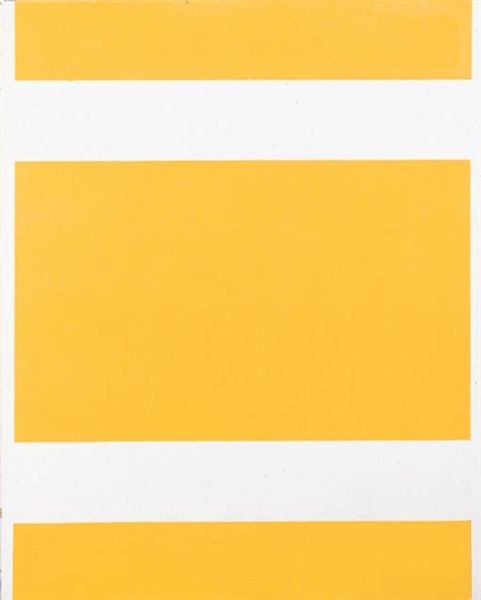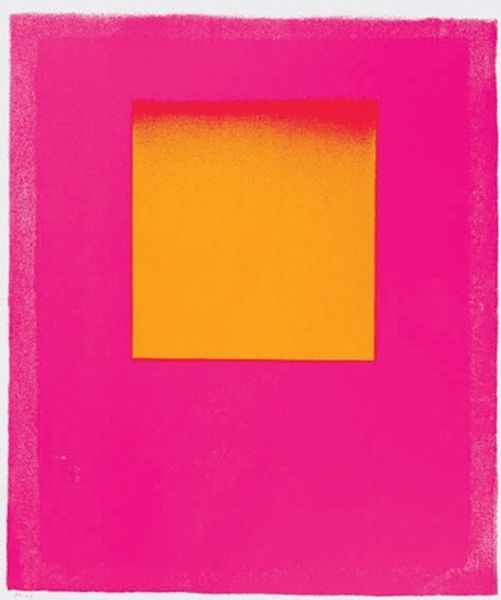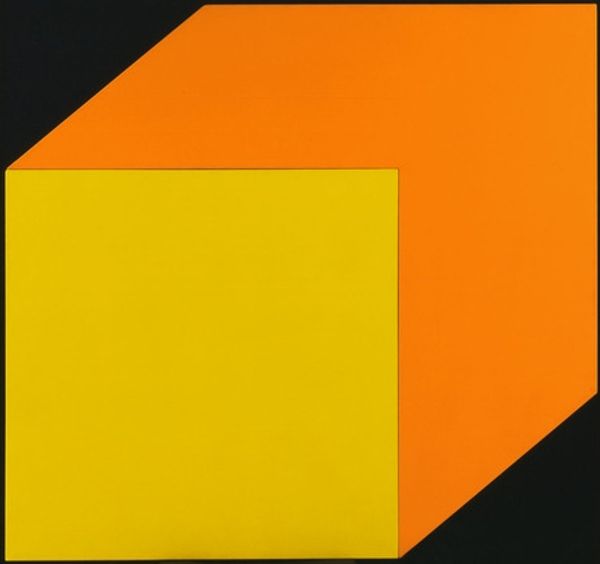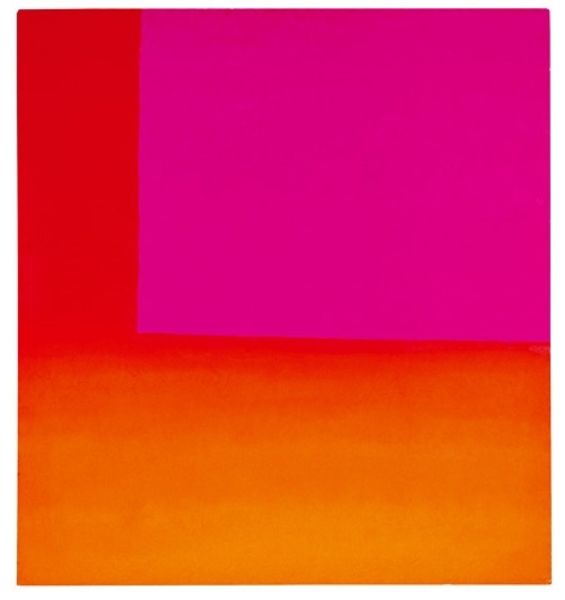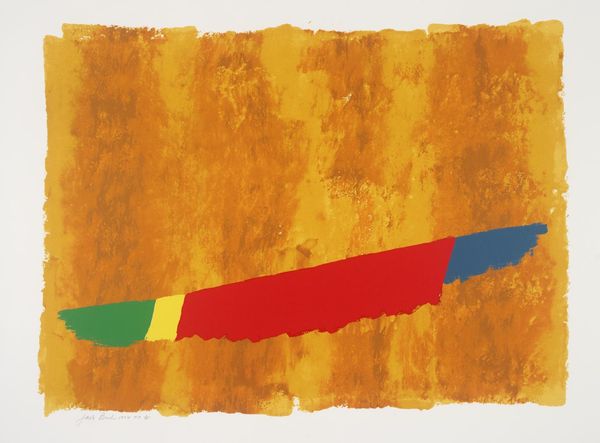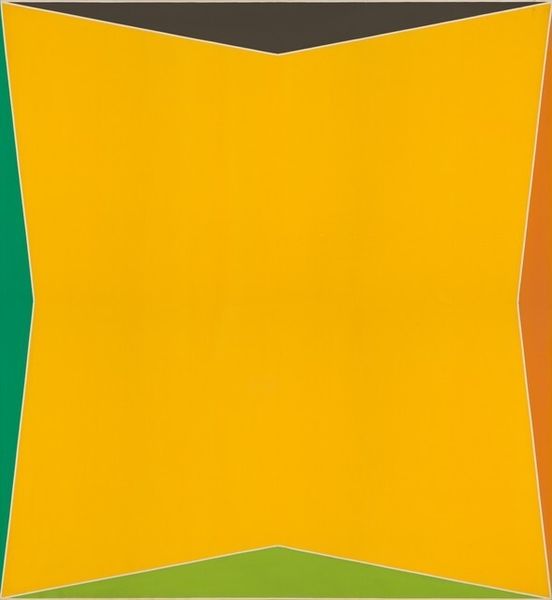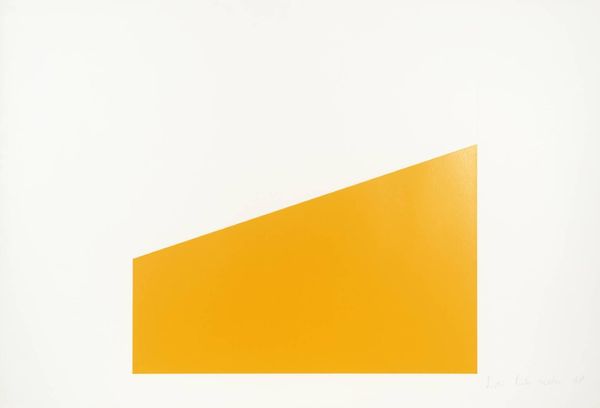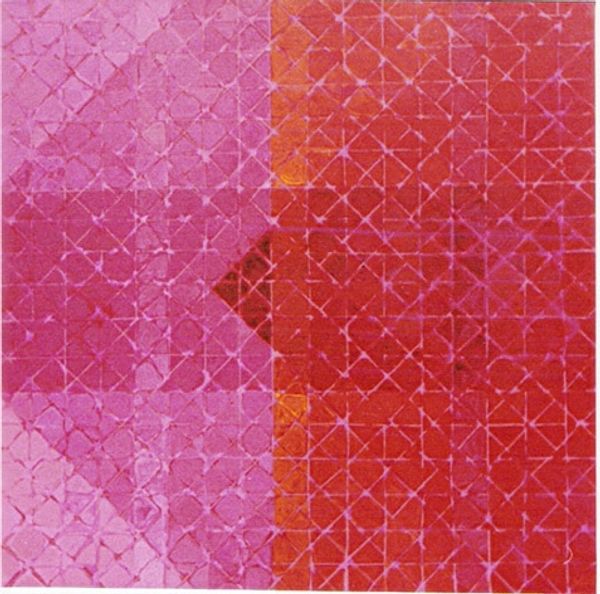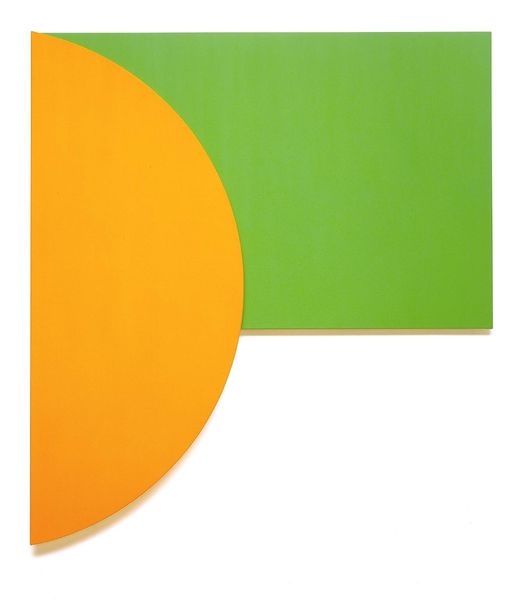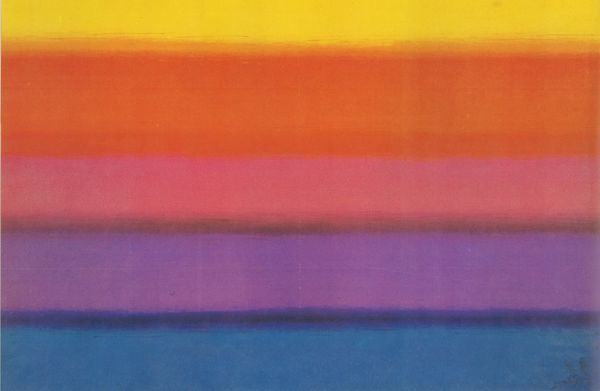
Copyright: Rupprecht Geiger,Fair Use
Editor: Here we have Rupprecht Geiger's "766b/84 (Metapherzahl 1)," created in 1984 using acrylic paint. The colors are striking—intense yellows, oranges, and pinks forming geometric shapes. What draws your attention when you look at it? Curator: It’s the materiality and production of these color fields that speaks to me. Look closely, and you'll see subtle gradations within each block. Geiger was meticulous in his application, building layers of acrylic. Editor: Yes, I notice the textures now! Does this layering have a specific purpose or effect? Curator: Absolutely. Consider the societal context of the 1980s, a period of mass production. Geiger, though working abstractly, emphasizes the hand in his art. He reminds us that the colors we perceive, even in their manufactured brilliance, are the result of human labor and intentional manipulation of materials. Think about the choices involved: the viscosity of the paint, the type of brushstrokes he employed. Editor: So it’s a commentary, maybe a resistance to pure industrial output? Curator: Perhaps. It certainly elevates the physical process. It compels us to consider not just the finished product, but the artistic intervention itself. The "how" and "why" of its construction become integral to understanding the "what." The raw pigments sourced, and how that availability impacted his process as well. Editor: That’s a perspective I hadn’t considered! I was so focused on the colors that I overlooked the act of making. Curator: Exactly! The means by which these colors come into existence directly inform our experience of them. Geiger prompts us to see beyond the surface aesthetic. Editor: I’ll definitely look at color-field painting differently now, appreciating the labor embedded within the artwork. Curator: Me too. Looking through the lense of materality made this an entirely new experience for me.
Comments
No comments
Be the first to comment and join the conversation on the ultimate creative platform.
